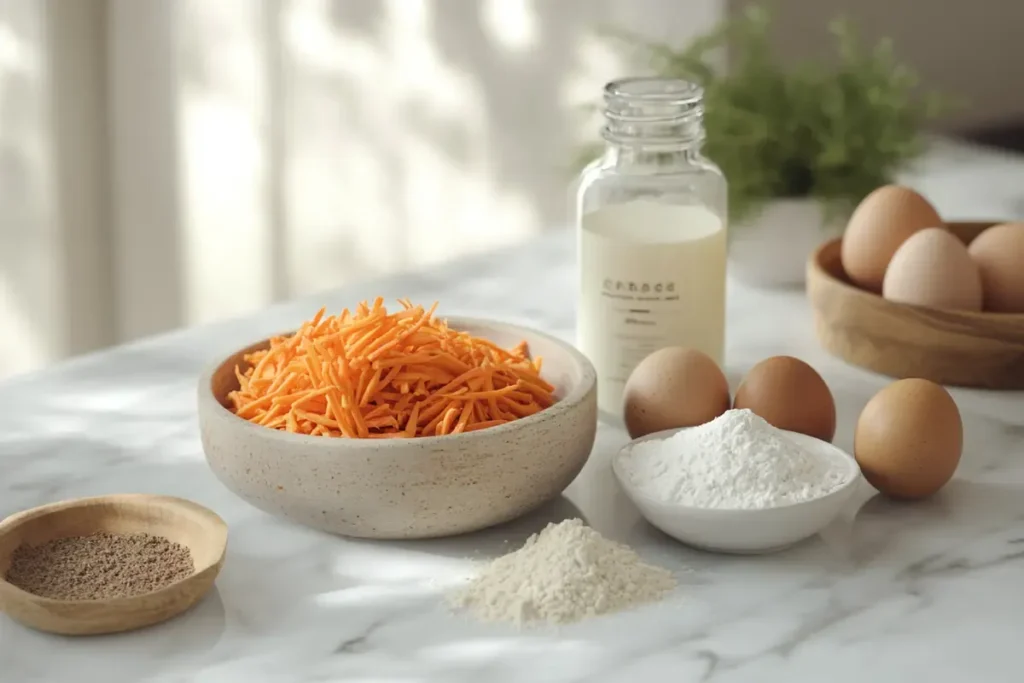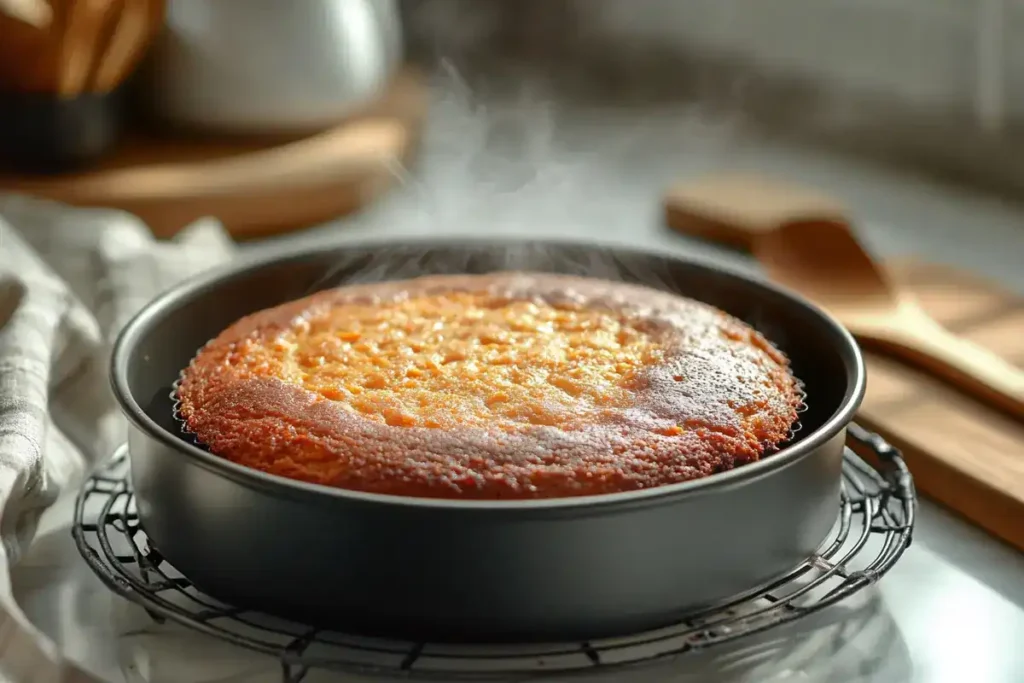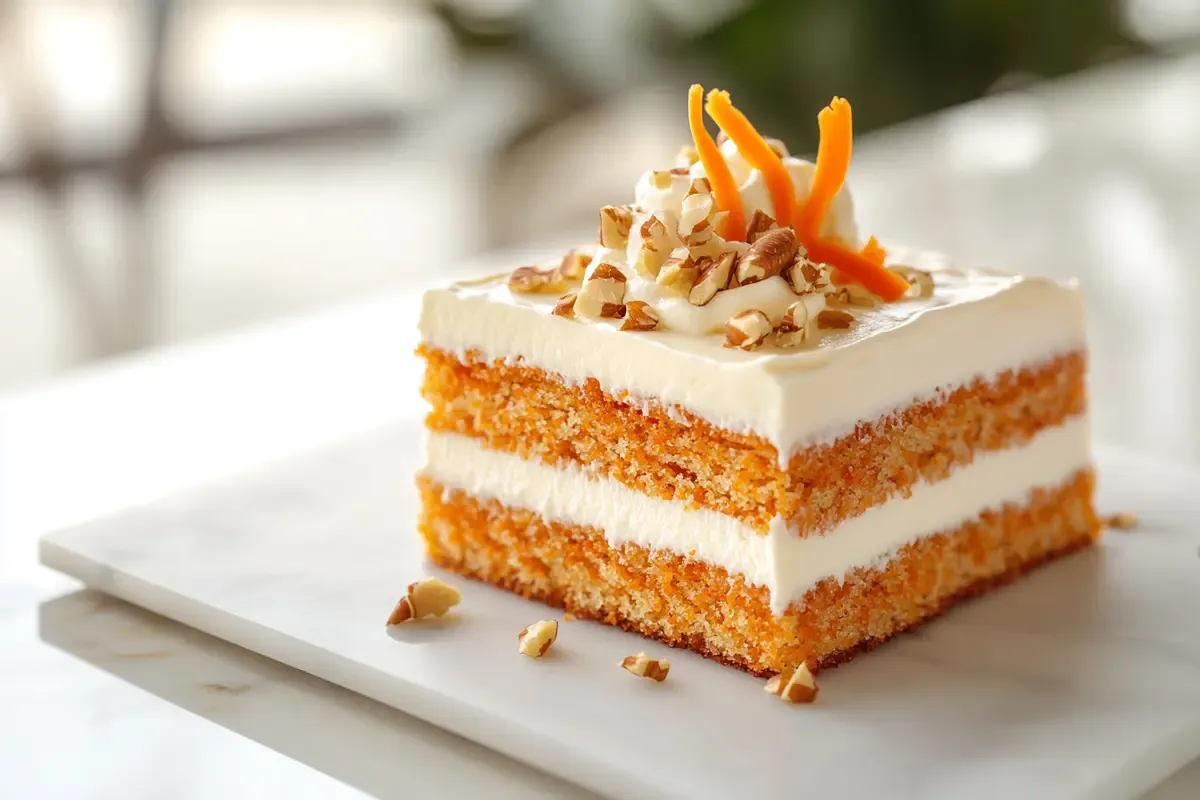Is It Better to Use Butter or Oil in Carrot Cake?
Carrot cake is a classic dessert loved for its moist texture, rich flavors, and versatility. However, a common question arises when preparing this treat: Is it better to use butter or oil in carrot cake? Each option has its own unique impact on flavor, texture, and even nutritional value. In this article, we’ll explore the role of fats in baking, compare butter and oil, and provide tips to help you decide which is the best choice for your carrot cake.
Understanding the Role of Fat in Carrot Cake
Carrot cake is a delightful dessert beloved for its moist texture and unique combination of sweet and spicy flavors. One of the most debated topics in its preparation is whether to use butter or oil as the primary fat source. Both ingredients play a significant role in shaping the texture, flavor, and overall experience of this classic cake. Let’s delve into how each option influences the final result and which might suit your preferences better.
The Importance of Fat in Baking
Fat is a cornerstone in baking, contributing to several critical aspects of the cake’s structure and taste:
- Moisture and Tenderness: Fat coats the flour particles, reducing gluten formation and resulting in a tender, moist crumb.
- Flavor: Fat carries flavor molecules, enhancing the overall taste profile of the cake.
- Texture: It helps achieve a soft, rich texture, preventing dryness.
Choosing between butter and oil depends largely on the desired outcome and the baker’s preferences.
Butter: The Flavorful Choice
Butter has been a traditional choice in baking for generations, known for its rich flavor and ability to create a flaky texture. When used in carrot cake, it lends a distinct creaminess that enhances the overall taste.
Pros of Using Butter:
- Rich Flavor Profile: Butter provides a luxurious, creamy taste that pairs wonderfully with the spices in carrot cake.
- Aeration Ability: When creamed with sugar, butter traps air, contributing to a lighter cake.
- Natural Emulsifier: Its fat and water content help blend ingredients smoothly.
Cons of Using Butter:
- Prone to Dryness: Butter solidifies at room temperature, which can make the cake feel denser or drier after cooling.
- Less Moisture Retention: Compared to oil, butter is less effective in keeping cakes moist over several days.
Best Scenarios for Butter:
Butter is ideal if you prioritize flavor and enjoy the subtle nuances it adds to the cake. It works well for occasions where the cake will be consumed fresh or paired with cream cheese frosting for added moisture.
Oil: The Secret to Moisture
Oil has become a popular alternative for baking due to its superior ability to retain moisture. Vegetable oil, in particular, is a favorite for carrot cake because of its neutral flavor.
Pros of Using Oil:
- Enhanced Moisture: Oil remains liquid at room temperature, ensuring a consistently moist cake.
- Neutral Taste: It doesn’t overpower other flavors, allowing the spices and carrots to shine.
- Longer Shelf Life: Cakes made with oil stay fresher for extended periods without drying out.
Cons of Using Oil:
- Lacks Flavor: Unlike butter, oil doesn’t contribute to the overall taste of the cake.
- Limited Aeration: Oil doesn’t trap air like butter, which can result in a denser cake.
Best Scenarios for Oil:
Oil is perfect for recipes where moistness is a priority or if the cake will be stored for several days. It’s also a great choice for bakers who want to let the spices and other ingredients, like carrots or nuts, take center stage.
The Science Behind the Choice
The decision between butter and oil often comes down to the science of baking. While butter’s solid nature at cooler temperatures adds structure, oil’s liquid consistency ensures consistent moisture.
Key Considerations:
- Texture Preference: If you prefer a fluffy cake, butter may be the way to go. For a dense, moist texture, oil is your best bet.
- Health Factors: Oil generally contains more unsaturated fats, making it a slightly healthier option compared to butter, which is higher in saturated fats.
- Flavor Profile: Butter enhances the cake’s taste, while oil creates a neutral base that allows other ingredients to shine.
Can You Combine Butter and Oil?
Some bakers experiment with a combination of butter and oil to enjoy the best of both worlds. This hybrid approach can provide the rich flavor of butter with the added moisture from oil, resulting in a balanced cake.
How to Use a Mix:
- Use equal parts butter and oil (e.g., ½ cup of each) to achieve a harmonious blend of flavor and moisture.
- Cream the butter with sugar first, then incorporate the oil for even distribution.
Conclusion
The choice between butter and oil for your carrot cake ultimately depends on your priorities: flavor, texture, or shelf life. By understanding how these fats impact the baking process, you can make an informed decision that suits your taste and occasion. Whether you prefer the richness of butter or the moistness of oil, there’s no wrong answer—only delicious results!
Comparing Butter and Oil in Carrot Cake
Butter in Carrot Cake: Pros and Cons
Butter is often favored for its rich, creamy flavor. When used in carrot cake, it provides a slightly denser texture and enhances the overall taste with a subtle hint of sweetness.
Pros:
- Adds a deep, buttery flavor.
- Creates a denser, crumbly texture.
- Works well with spices like cinnamon and nutmeg.
Cons:
- Can make the cake less moist over time.
- Requires creaming with sugar, adding an extra step.
- Shorter shelf life compared to oil-based cakes.
Oil in Carrot Cake: Pros and Cons
Oil, especially neutral options like vegetable or canola oil, is known for its moisture-retaining properties. It ensures a soft and tender crumb that stays fresh for longer.
Pros:
- Keeps the cake moist for days.
- Easier to mix into batters, no creaming required.
- Neutral oils won’t overpower the cake’s flavor.
Cons:
- Lacks the rich flavor that butter provides.
- Can feel heavier if used excessively.

Choosing the Right Fat for Your Carrot Cake
Deciding Based on Texture and Flavor
If you prefer a dense, flavorful carrot cake, butter might be your best bet. Its richness complements the spices and sweetness in the batter. However, if a moist and tender cake is your goal, oil is the way to go. It locks in moisture, ensuring every bite is soft and satisfying.
Health Considerations
For those mindful of health, oil typically contains unsaturated fats, which are considered heart-healthy. On the other hand, butter is higher in saturated fats, which should be consumed in moderation. Using alternatives like olive oil can also offer a healthy twist without compromising moisture.
Baking Carrot Cake with Butter or Oil
Step-by-Step Instructions for Butter-Based Carrot Cake
Using butter in your carrot cake can result in a rich and flavorful dessert. Here’s how to prepare it:
Ingredients:
- 2 ½ cups all-purpose flour
- 1 ½ teaspoons baking soda
- 1 teaspoon baking powder
- 1 teaspoon ground cinnamon
- ½ teaspoon nutmeg
- ¾ cup unsalted butter, softened
- 1 ½ cups granulated sugar
- 3 large eggs
- 2 teaspoons vanilla extract
- 2 cups grated carrots
- ½ cup crushed pineapple (optional)
- ½ cup chopped walnuts or pecans
Instructions:
- Preheat your oven to 350°F (175°C) and grease a 9-inch round pan.
- In a bowl, whisk together the dry ingredients: flour, baking soda, baking powder, cinnamon, and nutmeg.
- In another bowl, cream the butter and sugar until light and fluffy. Add eggs one at a time, then mix in vanilla.
- Gradually add the dry ingredients to the wet mixture, mixing until just combined.
- Fold in the grated carrots, pineapple, and nuts.
- Pour the batter into the prepared pan and bake for 35-40 minutes. Test with a toothpick—it should come out clean.
- Let the cake cool completely before frosting.
Step-by-Step Instructions for Oil-Based Carrot Cake
For a moist, tender carrot cake, oil is an excellent choice. Follow these steps:
Ingredients:
- 2 cups all-purpose flour
- 2 teaspoons baking soda
- 1 teaspoon cinnamon
- ½ teaspoon nutmeg
- 1 cup vegetable or canola oil
- 1 cup granulated sugar
- ½ cup brown sugar
- 4 large eggs
- 2 teaspoons vanilla extract
- 2 ½ cups grated carrots
- ½ cup raisins (optional)
- ½ cup chopped pecans
Instructions:
- Preheat your oven to 350°F (175°C) and grease a 9×13-inch pan.
- In a bowl, sift together the flour, baking soda, cinnamon, and nutmeg.
- In another bowl, whisk the oil, granulated sugar, brown sugar, eggs, and vanilla until smooth.
- Slowly mix the dry ingredients into the wet mixture. Fold in grated carrots, raisins, and pecans.
- Pour the batter evenly into the pan.
- Bake for 40-45 minutes, checking for doneness with a toothpick.
- Cool completely before frosting or serving.

Part 5: Enhancing Your Carrot Cake
Frosting Ideas
The right frosting can elevate your carrot cake, whether it’s made with butter or oil:
- Classic Cream Cheese Frosting: Beat cream cheese, butter, powdered sugar, and vanilla until fluffy.
- Citrus Frosting: Add orange zest and juice to cream cheese frosting for a refreshing twist.
- Whipped Buttercream: For a lighter topping, whip butter with powdered sugar and a splash of milk.
Adding Unique Flavors
Experiment with additional ingredients to make your carrot cake stand out:
- Shredded coconut for a tropical touch.
- A dash of ginger for warmth and spice.
- A handful of dark chocolate chips for indulgence.
For more delicious recipes, check out our carrot cake variations article.
Nutritional Differences Between Butter and Oil in Carrot Cake
Calorie and Fat Content
When comparing butter and oil, the primary distinction lies in their fat composition:
- Butter contains saturated fats, which can contribute to a richer taste but are higher in cholesterol. A tablespoon of butter has about 100 calories and 11 grams of fat.
- Oil, such as vegetable or canola, is predominantly made up of unsaturated fats. It is slightly more calorie-dense, with about 120 calories per tablespoon but offers heart-healthy benefits.
For those watching their calorie intake, the choice between butter and oil can significantly impact the overall nutritional profile of your carrot cake.
Moisture and Texture Impact
- Oil-Based Cakes: Oil tends to create a moister cake that remains tender for longer, even after refrigeration.
- Butter-Based Cakes: Butter enhances flavor and provides a denser texture, though it may not retain moisture as effectively as oil.
When deciding between the two, consider whether flavor or texture is more important for your specific preferences.

Healthier Alternatives for Baking Carrot Cake
Substitutes for Butter and Oil
If you’re looking to make your carrot cake healthier, there are plenty of alternatives:
- Applesauce: Replace up to half the oil or butter with unsweetened applesauce to reduce fat and add natural sweetness.
- Greek Yogurt: This adds creaminess and protein while cutting back on fat. Use it in place of half the butter or oil.
- Mashed Bananas: Great for moisture, mashed bananas add a natural sweetness and eliminate the need for extra sugar.
Adding Nutrient-Rich Ingredients
Incorporate superfoods to boost the nutritional value of your cake:
- Chia Seeds or Flaxseeds: Add a tablespoon to the batter for extra fiber and omega-3 fatty acids.
- Whole-Wheat Flour: Swap part of the all-purpose flour with whole-wheat flour for added fiber and nutrients.
- Carrot Variations: Try heirloom carrots in different colors for a vibrant look and added antioxidants.
For more creative twists, consider pairing your carrot cake with healthy toppings like a dollop of whipped Greek yogurt instead of traditional frosting. Let me know when you’re ready to proceed with the final sections!
Expert Tips for Perfect Carrot Cake
Balancing Ingredients for Optimal Flavor
When answering the question “Is it better to use butter or oil in carrot cake?”, it’s essential to balance the other ingredients to achieve the best flavor:
- Spices: Include cinnamon, nutmeg, and a touch of ginger for a warm, rich taste.
- Sweeteners: Brown sugar complements the earthy flavor of carrots better than white sugar, adding depth and moisture.
- Carrots: Use freshly grated carrots for maximum moisture and natural sweetness.
By focusing on complementary flavors, you can create a carrot cake that shines regardless of whether you choose butter or oil.
Enhancing Texture and Moisture
- Fold Gently: When incorporating wet and dry ingredients, fold them together carefully to avoid overmixing, which can lead to a dense cake.
- Layer Variations: For added texture, mix in shredded coconut, crushed pineapple, or chopped walnuts.
- Moisture Boosters: For a super moist cake, add a couple of tablespoons of milk or cream to the batter.
Final Thoughts and Recipe Highlights
Butter vs. Oil: The Final Verdict
Is it better to use butter or oil in carrot cake? The answer depends on your preferences:
- Choose Butter if you value rich, buttery flavor and a slightly denser cake texture.
- Opt for Oil if you prioritize moistness, longer shelf life, and a lighter crumb.
Both options deliver excellent results when paired with the right balance of spices, sweeteners, and mix-ins.
Embracing Customization
Carrot cake is versatile and forgiving, making it perfect for experimentation. Whether you’re baking for a celebration or a casual dessert, don’t hesitate to customize with your favorite ingredients.
For more inspiration, explore our other carrot cake recipes to find your ultimate favorite. Happy baking!
Let me know if you’d like to proceed with SEO optimization or other details!

